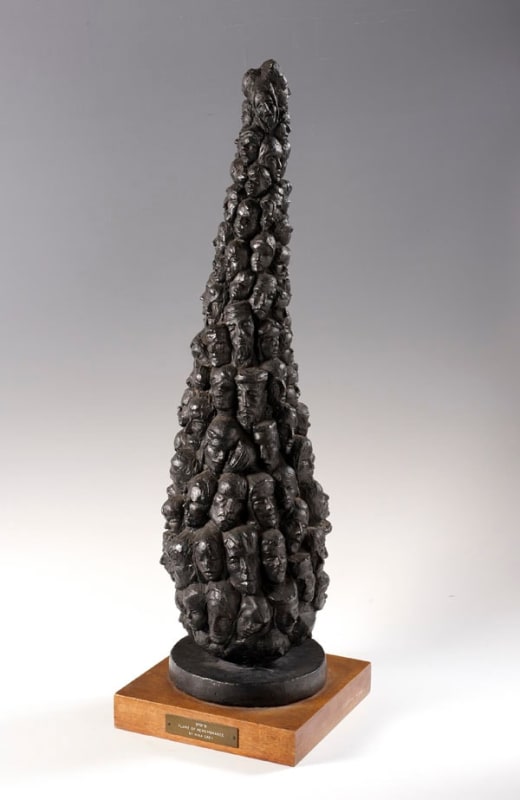Nina Grey was born Janina Gruenberg into a Jewish family in Lvov, Poland (now Lviv, Ukraine) in 1907. The city had a large Jewish community and a long history of conflict from sieges by the Cossack forces in 1648, to battles with Russia and Austria. In 1915, during the First World War, at the age of eight, Grey fled with her family to Vienna in Austria-Hungary (now Austria), where she grew up. She attended the College for Jewish Teachers and embarked on a teaching career in the 1920s prior to her marriage. In 1939, following the outbreak of war in Europe and the threat of Nazi persecution, she was forced to flee for the second time, moving with her husband to England and settling in London.
After the war, having always had 'the desire to model' (Ben Uri exhibition catalogue, 1962), she had the opportunity in 1952 to study sculpture, firstly, at the Hornsey, and then at St Martin’s School of Art in London. In 1958 her work was exhibited in London at the Royal Academy and picked out for mention by the 'Jewish Chronicle', and in 1959 she showed at the A.I.A. (Artists' International Association) Gallery in Lisle Street, Soho. Her first solo exhibition, comprising 19 sculptures in media including bronze, ciment fondu and plastic metal on plaster was at Ben Uri Gallery in 1962, and she also had a solo exhibition at Foyles Art Gallery in 1963. Her work was mainly figurative and included single, double and group figures, as well as portrait heads and busts, and some experimental works. She also made works specifically referencing the Holocaust including a terracotta plaque of a Nazi soldier wearing a swastika armband, and armed with a gun, in front of a line of men, women and children, and the symbolic 'Flames of Remembrance' (1961), made in plaster, which she also cast in bronze and presented to Yad Vashem World Holocaust Museum in Israel. She presented works to the Ben Uri Collection in 1992 and 1994 and her work was included in Ben Uri Picture Fairs in 1993 and 1996. She also painted, exhibiting with the Royal Watercolour Society and the Royal Institute of Painters in Watercolours Galleries.


